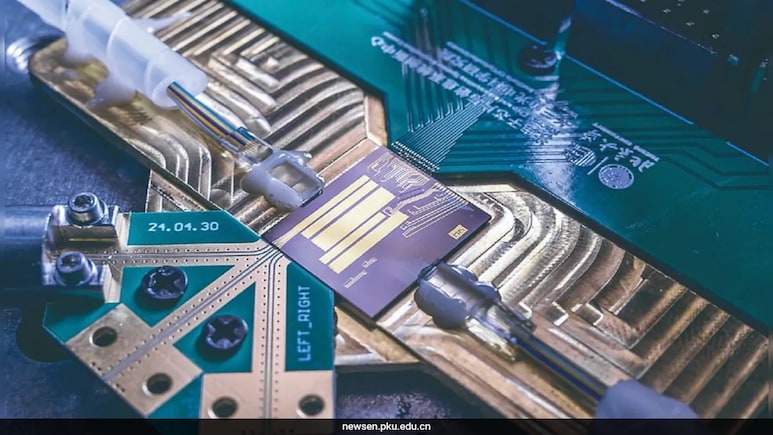
In a groundbreaking development, engineers from China and the United States have unveiled a prototype 6G chip capable of internet speeds exceeding 100 gigabits per second (Gbps), a leap almost 10 times faster than 5G's theoretical maximum and nearly 500 times faster than the average speeds most users experience today.
The pioneering chip, developed collaboratively by researchers at Peking University, the City University of Hong Kong, and the University of California, Santa Barbara, was recently detailed in the journal Nature.
What makes this breakthrough especially remarkable is the chip's tiny footprint, measuring just 11 by 1.7 millimetres. Inside this small package, the device can operate across an ultra-broad frequency band ranging from 0.5 GHz to 115 GHz, a feat typically requiring multiple distinct components and radio bands.
The secret lies in a novel electro-optic modulator, which converts radio signals into optical signals efficiently. Coupled with optoelectronic oscillators that regenerate frequencies across the ultra-wide spectrum, this innovation allows the chip to support blistering 6G-class performance.
"There is an urgent need to tackle 6G development challenges," Professor Wang Xingjun from Peking University said in a news release.
"As the demand for connected devices grows rapidly, next-generation networks must leverage the strengths of different frequency bands. High-frequency bands such as millimetre-wave and terahertz offer extremely large bandwidth and ultra-low latency, making them suitable for applications like virtual reality and surgical procedures," he added.
For comparison, 5G networks max out at 10 Gbps under ideal conditions, though practical speeds in countries like the US hover between 150 Mbps and 300 Mbps. By contrast, the new chip demonstrates that 6G can truly revolutionise connectivity, enabling ultra-high-definition streaming, immersive metaverse applications, and AI-powered services that demand extreme data throughput.
While experts emphasise that 6G networks are unlikely to roll out until the 2030s, such prototypes represent critical progress in building the ecosystem of the future. With global data demand surging, innovations like this miniature chip may pave the way for the next wireless revolution.

